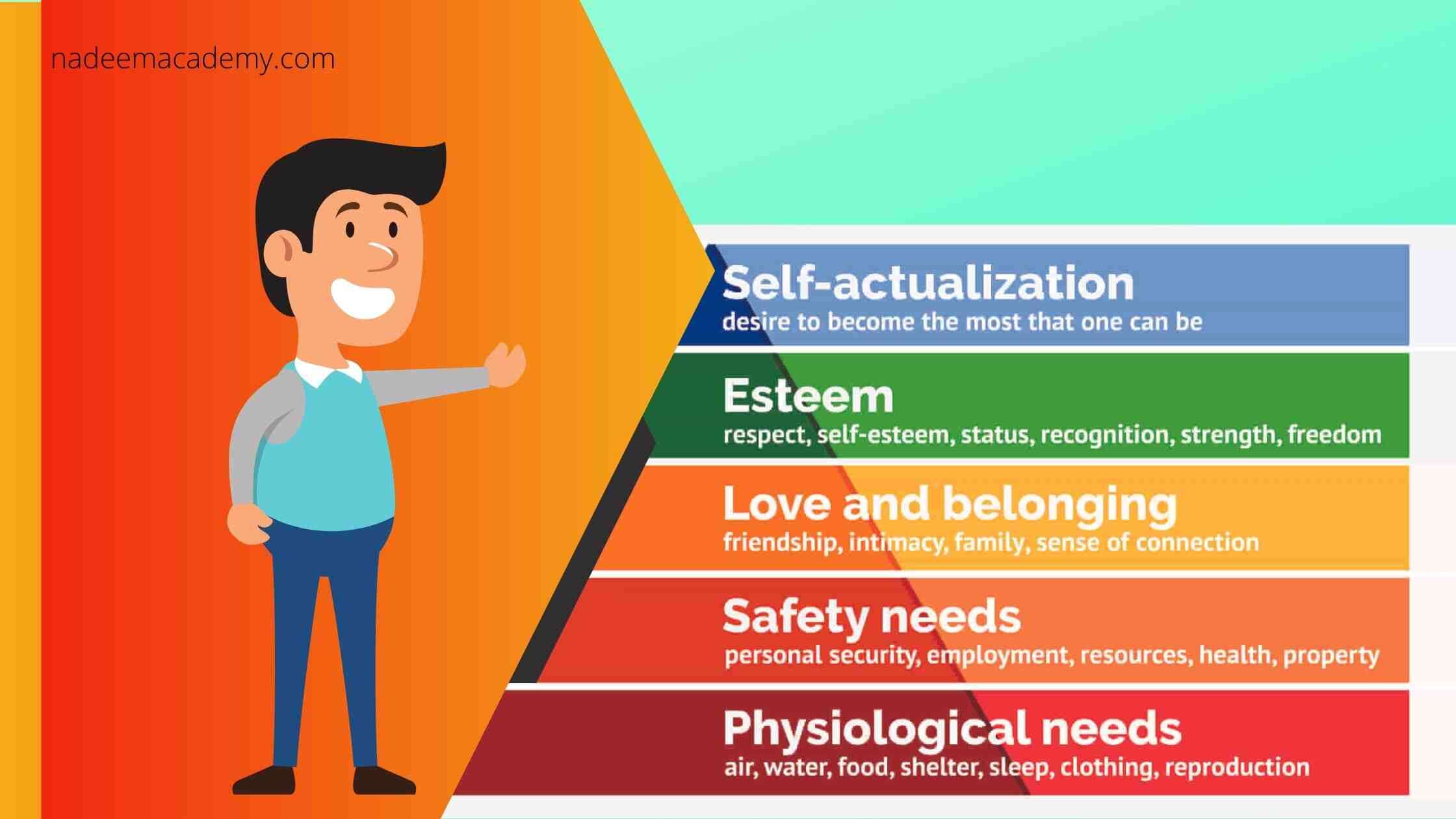Piramide De Maslow and Explanation of Maslow’s Hierarchy of Needs
The theory of psychology, which explains human motivation, which is based on the pursuit of various levels of needs, is known as Maslow’s Hierarchy of Needs also known as Piramide De Maslow. The theory also states that humans can be motivated for fulfilling their needs in an order of hierarchy order. This order starts with the basic needs before moving on for more advanced needs. According to this theory, the ultimate goal is to achieve the fifth level of the hierarchy, i.e., self-actualization.
Maslow’s hierarchy of needs is referred to in business classes concerning organizational behavior and human resources.
History
Maslow’s hierarchy of needs was introduced first in Abraham Maslow’s 1943 paper, “A Theory of Human Motivation. “ Later Maslow refined this type of theory in the year 1954 by introducing his book, “Motivation and Personality. “ Since then, this type of theory has remained as a more popular subject in sociology, a management training, and a psychology classes.
Various levels of Hierarchy in Piramide De Maslow
There are five main levels which are included in Maslow’s hierarchy of needs. These levels start from the basic needs and reach to the most advanced needs. Originally, Maslow believed that a person needed to satisfy one level to begin pursuing different levels completely.
A modern perspective is more that these levels are overlapping. As one person reaches higher levels, their motivation has been directed more towards these levels. However, though their focus is mainly on higher levels, they will continue to pursue lower hierarchy levels but with less intensity.
1. Physiological Needs
Physiological needs are counted as the lowest level of Maslow’s hierarchy of needs. At this level, the essential things which a person needs for surviving are included. They include the need for shelter, food, shelter, rest, warmth and health. A person’s motivation at this level is derived from their instinct for surviving.
2. Safety Needs
The second level of a Maslow’s hierarchy of requirement of needs is included with the needs for safety. Safety, or security needs, are related to a person’s need for feeling safe and secure in their surroundings and life. Motivation also comes from the need for law and order and protection from dangerous and unpredictable conditions.
There are several examples of needs of safety in modern society. For finding stability and security, a person must consider their physical safety. It means that seeking protection from the health threats, natural elements, violent conditions and sickness. Additionally, an individual also needs an economic safety to live and thrive in modern societies. It refers to the requirement for stable income, job security, and savings. One method for achieving economic safety is to learn proper strategies of investment.
3. Love and Belonging Needs
The third level of the hierarchy of needs consists of love and belonging needs. Humans are considered as social creatures who crave interaction with others. This level of the hierarchy highlights the need for friendship, intimacy, family, and love. Humans also need to give and receive love; for feeling like they belong in a group. When they are deprived of these needs, individuals may also experience depression or loneliness.
4.Esteem Needs in Piramide De Maslow
The one of the fourth level of the hierarchy of a needs as this is consisted with the esteem needs. Esteem needs can be related to a person’s need for gaining recognition, feel respected and maintained status. Once someone who has been fulfilled their love and a type of belonging needs, then they can seek for fulfilling their esteem needs.
Piramide De Maslow have also broke up esteem needs into two categories: the need for respect from others and Self-Respect. Respect from others is related by achieving prestige, fame and recognition. Respect from oneself is related with confidence, competence, dignity, independence, and freedom.
5. Self-Actualization Needs
The final level is the fifth level of Maslow’s hierarchy of needs is the need of self-actualization. Self-actualization can be related to the realization of the full potential of an individual. At this level, people can strive for becoming the best that they can possibly be.
The need for self-actualization can be manifested in different ways, such as:
Obtaining various skills (e.g., financial modeling skills).
Continuation of education (e.g., online training courses).
Utilization of skills, knowledge, and talents.
Seeking happiness.
Pursuing life dreams.
One person can also strive for becoming the best parent and everyone’s best friend. Another person might also aim for becoming a millionaire and a philanthropist. Others may work toward becoming famous athletes. In general, self-actualization can be pursued for personal growth.
Deficiency vs. Growth Needs in Piramide De Maslow
Maslow have separated his hierarchy into two different overarching types of needs: deficiency needs and growth needs.
The main difference between deficiency and growth needs is the change in motivation as needs are met. Motivation increases are growth needs met. Conversely, motivation can be decreased as deficiency needs have been met.
As previously mentioned, self-actualization can be pursued for personal growth, thus making it as a growing need. Growth needs have been originated from a desire to become better and grow as a person. As a person is fulfilling growth needs, their motivation can be increased as their desire for becoming even better increases.
Conversely, deficiency needs can be pertained in the four levels below self-actualization like physiological, safety, love and belonging, and esteem needs. Deficiency needs a support from a person’s desire for getting rid of deficiencies or obtain things they lack. As a person is obtaining the things that they lack in their motivation for obtaining these things decreases.
Know how to earn passive income.
Some examples of Maslow’s Hierarchy of Needs
Generally, a person’s motivation can rely in the level of the hierarchy that they are presently pursuing. Here are some conditions that are examples of this.
E.g., if a person is lost in the woods, they are likely for fulfilling their physiological needs. They might be thirsty, hungry, lacking shelter, or cold. This individual probably would not be concerned with their financial security or need to belong in a group. They might be looking for fulfilling the conditions for their immediate survival.
Conversely, we can review a senior financial analyst. It is someone who has a secure, high-paying job, a spouse, a family, and a house.
Piramide De Maslow says that a person may be having a well-respected position at their company and also among their peers. It is unlikely that this person’s motivation can be focused on their physiological or safety needs, as these are fulfilled. Instead, they would be have been looking to strive for a personal happiness and growth.
They would be looking to mainly fulfill their self-actualization of needs and will be discover what else the world has to be offer and what they have to mainly offer the world.

My Name is Nadeem Shaikh the founder of nadeemacademy.com. I am a Qualified Chartered Accountant, B. com and M.Com. having professional and specialize experience in field of Account, Finance, and Taxation. Total experience of 20 years in providing businesses solution in Taxation, Accounting, and Finance with all statutory compliance with timely business performance Financials reports. You can contact me on nadeemacademy2@gmail.com or contact@nadeemacademy.com.
